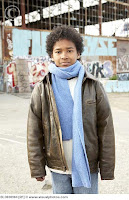 Microloans and microbusinesses are an incredibly powerful force for positive change in developing countries. Pioneered and brought to scale by Muhammad Yunus and his Grameen Bank (for which he won a Nobel Prize in 2006), the model has now been used in many developing countries by both aid and private organisations.
Microloans and microbusinesses are an incredibly powerful force for positive change in developing countries. Pioneered and brought to scale by Muhammad Yunus and his Grameen Bank (for which he won a Nobel Prize in 2006), the model has now been used in many developing countries by both aid and private organisations. New models such as Kiva, The Acumen Fund and OrphanIT are harnessing this principle with new technologies and localised action to effect further positive change.
I wonder - could we do it in reverse? Can we use the same methods to help people in need in developed countries too?
Some examples could include:
- Microloans - A gap-filling micro-loan service tied to a major supermarket chain. A friends micro-bank, like they do with circles of women in Africa, supprting positive, repsonsible money management with minimal charges. In effect, acting like an extended family network.
- Kiva - replicate the model directly, for micro-businesses and supported with mentors, meet-ups, private social networks. Could be country based or local community based.
- OrphanIT - Grown from an abundance of both orphans and IT skilled people in India in particular, what do you have a local abundance of that can work reciprocally to improve a local need? Is it apple trees and young teenage mums - why not create Mother's Own pure natural apple juice?
You? How could you reverse the models and help your community?
Image credit: Visual Photos






